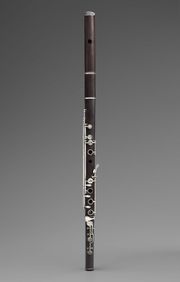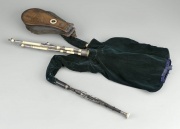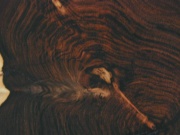Difference between revisions of "Cocuswood"
Jump to navigation
Jump to search
| Line 1: | Line 1: | ||
| − | [[File:17.1933-SC111352.jpg|thumb|]] | + | [[File:Cocuswood flute MFA1989204 .jpg|thumb|English flute<br>MFA# 1989.204]] |
| + | ]][[File:17.1933-SC111352.jpg|thumb|]] | ||
== Description == | == Description == | ||
Revision as of 13:02, 2 October 2020
]]
Description
A dense, black ebony-like wood obtained from the Brya ebenus trees native to Central America and the Caribbean islands. Cocuswood is a slow-growing tree that has brittle, black heartwood with a fine uniform texture. It is used for inlays, brush backs, parquet, and musical instruments (especially flutes, clarinets, oboes and bagpipes).
Synonyms and Related Terms
Brya ebenus; Cocus wood; cocoswood; cocswood; Jamaica ebony; Jamaica rain tree; West Indian ebony; green ebony; espino de sabana, granadillo,
Physical and Chemical Properties
- Can grow to 20-30 feet with long drooping branches
- Leaves are small and waxy. They are compount but often appear simple.
- Fruits have bright yellow flowers
- Density = 75 ppcf
Resources and Citations
- F. H. Titmuss, Commercial Timbers of the World, The Technical Press Ltd., London, 1965
- Wikipedia: https://en.wikipedia.org/wiki/Brya_ebenus (accessed October 2020)


